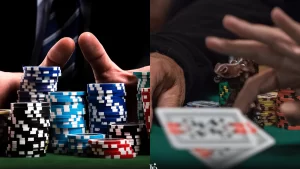
As you’ve probably already guessed, a poker hand is composed of five cards, known as the five-card hand. In poker, the highest card is the ace, followed by the king, queen, and jack. All other cards are valued equally, but the deuce is the exception, having the same value as the king. Here are some of the best known card combinations. If you can beat all five of these hands, you’ve won!
For most card games, you’ll need at least two cards. Poker size cards are sized at 2.5×3.5″ to accommodate 15 cards on a side. The dimensions are so small that a B0 sheet would fit only a quarter card, and the additional 31 cards would be 10mm too short. In addition to the wasted space, the B0 sheet is 3750 square millimeters in area. This is not ideal, especially if you’re trying to make a poker hand.
The highest card in a poker hand wins. The high card is used to break ties between two players. In a five-card hand, you need to have two pairs of cards and three distinct cards. A five-card hand is known as a “high hand.” This type of hand is the best way to beat a high-rolling game. The rules for poker cards make it possible to win money, but you must be able to raise your bet to avoid losing your hand.
When choosing your deck, make sure it’s durable and easy to play with. A deck made of plastic can get very dirty during a game, making it difficult to see the suits and numbers. Regularly freshening them will extend their lifespan. Dishwashing liquid and thorough drying will refresh the cards. Kilbert recommends that you own two decks, one for playing poker and one for poker-related games. Then you can switch the two when you feel the urge to play the game.
Despite its widespread popularity, the design of the poker deck is still influenced by the origins of the game. During the Middle Ages, card games often involved drinking and gambling, and drew the attention of charlatans and cheats. As the popularity of poker games spread across Europe, it was eventually banned from workdays. Many preachers believed that playing card games was a sign of depravity and punished those who would cheat. Because of this, the design of modern poker decks has been heavily influenced by these early days.
Traditionally, a single dealer deals cards face-up to each player in a rotating fashion. After a player receives the jack, the dealer then turns over the dealing of five cards. The dealer’s turn to deal cards, and the player’s turn to bet, passes from player to player. When a dealer cuts the hand, the dealer has to offer a shuffled pack to one of his or her opponents.







